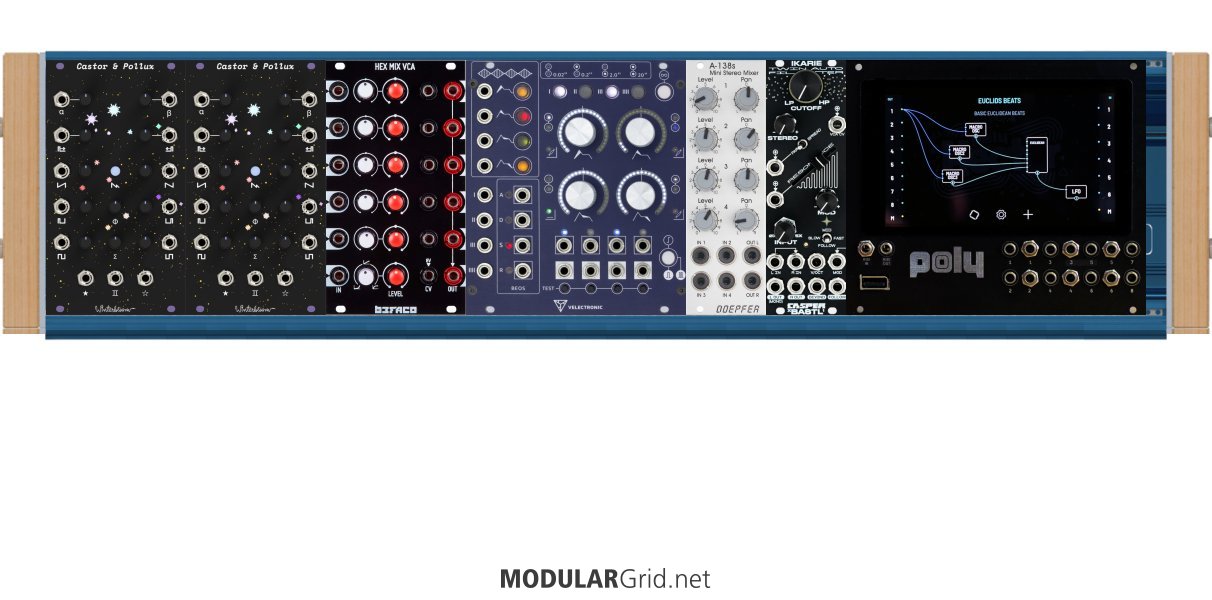Obligatory: https://www.modulargrid.net/e/forum/posts/index/3579 . The "polyphony" part is important here.
Honestly, I don't think this system would be all that much fun to play with - you barely have enough modulation sources to control your STOs' volume, leaving you with one mod source (either the A-140 or one of maths' function generators) and whatever the NK provides for actual modulation of all the possible places you could modulate - the STO inputs, the BIA's and AI's inputs, the filters' frequency and the squawk dirty's other inputs. At this point, once you've gotten a fun patch going, you have zero modulation sources left to actually do anything with that morphagene.
Personally, I'd probably scratch the idea of going for four voices entirely and build for one or two voices and a lot more modulation (and attenuators, VCAs and all the other utilities that come with that :P). If you do want multiple voices, it's probably better to get a standalone synth (such as the dreadbox nymphes) and, if the synth doesn't have one, a MIDI keyboard. You'll have a much more balanced and affordable system.
If you insist on making a polyphonic eurorack, I'd go for voices with a lot smaller foot print - BoBeats' test setup (seen at about two-three minutes in and onwards - the embed doesn't care for the timestamp apparently), for instance, used two Winterbloom Castor&Polluxes and a tiny VCA. I'll try and reconstruct his setup as a modulargrid link later, if I remember to.
Edit: I've reconstructed BoBeats' setup now: 
Note that this is still just a very simple four-voice synth without lots of options in terms of modulation or patching, which at least in my book wouldn't justify the (roughly) 2.5k€ price tag when something like the aforementioned dreadbox nymphes does basically the same stuff for less than a third of that.

